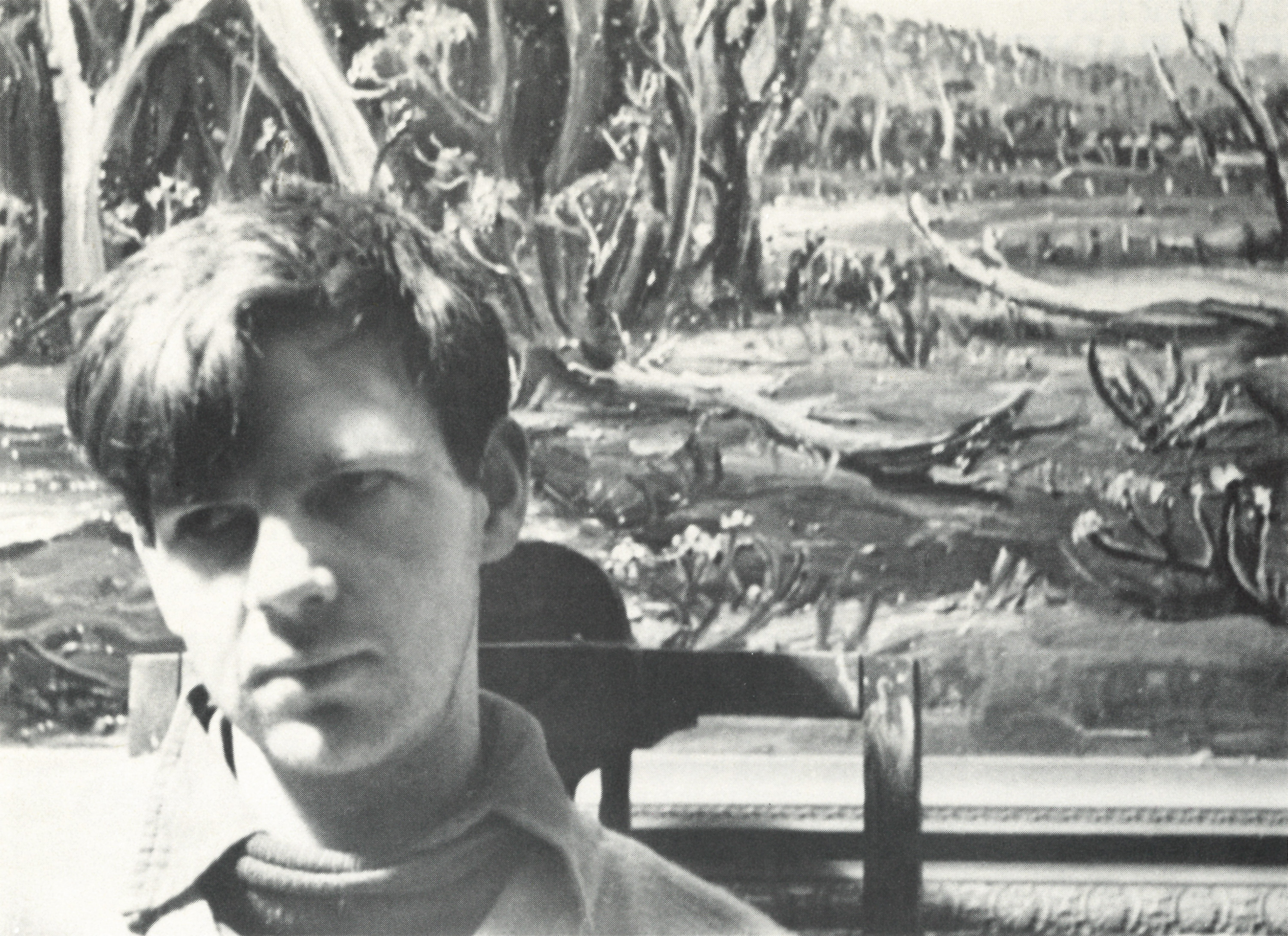LANDSCAPE (BACCHUS MARSH), 1943 – 45
ARTHUR BOYD
oil on canvas on composition board
62.5 x 74.5 cm
signed and dated lower right: Arthur Boyd 45
signed and dated lower left: A Boyd 45
bears inscription on backing verso: ARTHUR BOYD / BACCHUS MARSH LANDSCAPE
possibly: Mr and Mrs Gerd Buchdahl, Cambridge, England
Joseph Brown Gallery, Melbourne
Private collection, Melbourne, acquired from the above
Thence by descent
Private collection, Melbourne
possibly: Contemporary Art Society 7th annual exhibition, Myer Gallery, Melbourne, 21 – 31 August 1945, cat. 105 (as ‘Landscape’)
Winter Exhibition, Joseph Brown Gallery, Melbourne, June 1971, cat. 29 (as ‘Landscape with creek’)
Arthur Boyd Retrospective, Art Gallery of New South Wales, Sydney, 15 December 1993 – 6 March 1994, National Gallery of Victoria, Melbourne, 20 March – 23 May 1994, Tasmanian Museum and Art Gallery, Hobart, 9 June – 21 August 1994, Art Gallery of Western Australia, Perth, 22 September – 20 November 1994, cat. 42 (label attached verso)
possibly: Philipp, F., Arthur Boyd, Thames and Hudson, London, 1967, cat 5.1, p. 245 (as ‘Landscape, 1945’)
Haese, R., Rebels and precursors: the revolutionary years of Australian art, Penguin, Melbourne, 2nd ed., 1988, fig. 25, pp. 91 (illus.), 195, 280
Hoff, U., The Art of Arthur Boyd, Andre Deutsch, London, 1986, pl. 50 (illus., dated as ‘1943’), pp. 40, 242
Pearce, B., Arthur Boyd Retrospective, Art Gallery of New South Wales, Sydney, 1993, cat. 42, p. 60 (illus., dated as ‘1943’)
230108. cmyk FA.jpg

In the mid-1930s, a young Arthur Boyd had his first encounter with the town of Bacchus Marsh, located in a fertile valley on the border of the traditional lands of the Woiwurrung and Wathaurong peoples in Victoria. Despite the bucolic setting, the encounter was not pleasant. Scouting locations for scenes to paint, Boyd was caught in a downpour and took shelter under the awning of a local shop. Spying the bedraggled, long-haired teenager, the local policeman decided he looked like a criminally inclined delinquent, and ‘before any harm could come to Bacchus Marsh, Arthur was run out of town.’1 It would be easy therefore to consider this subsequent painting, Landscape (Bacchus Marsh), 1943, depicting a twisted and foreboding snarl of trees, as a riposte to the town but it is far more complex and important than that. It is instead recognised as a pivotal work, one of the artist’s key paintings done in response to the anguish of World War II.
The early years of the War saw radical changes occur within Boyd’s art. A humanist and pacifist, he was nonetheless conscripted into the army where he worked in the cartographic section. It was here that he met John Perceval who would become his artistic soulmate for the next decade and who in turn, would marry Boyd’s younger sister, Mary, in 1944. Boyd’s paintings from 1942 and early 1943 are turbulent, full of gargoyles, cripples (based on Perceval) and totems occupying locations around South Melbourne. As the series progressed, Boyd’s mood and palette darkened, and he sought to create a more appropriate contemporary landscape than the hitherto reigning glory of Arthur Streeton’s blue and gold. Boyd found inspiration in a watercolour by Louis Buvelot (Yarra Flats, 1871) which he studied on repeat visits to the National Gallery of Victoria. It echoed the earlier studies he had done of Bacchus Marsh, but it was Buvelot’s handling of the trees, clumped darkly in the foreground, that caught Boyd’s attention. His response was the present work, Landscape (Bacchus Marsh), yet whereas Buvelot’s image is calm and reflective, Boyd’s is deliberately challenging, with trees straining towards the sky as their dead companions lie littered at their feet. This definitive work led directly to the acclaimed ‘Hunter and Shepherd’ series where figures and hybrid animals engage in eternal struggle within similar primordial forests.
1. Bungey, D, Arthur Boyd: a life, Allen and Unwin, Sydney, 2007, p. 37
ANDREW GAYNOR
